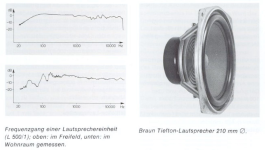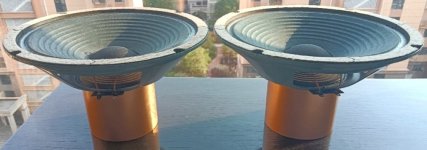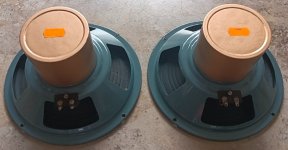Two questions:
(1) You probably null-tested the equalizer set to NO-OP -- how did that sound?
(2) You probably compared the FR you actually heard in-ear (through a basic hearing test) with the mic -- how did you control for the differences?
To be scientific (and then to report findings) requires obsessive attention to rigor and detail....
The equalizer had a bypass switch. I could hear the effect of the equalization.
I moved the microphone and speakers about to make sure I didn't have an issue with standing waves. So I could remove the effects of the room from the equalization.
I was familiar with the equipment and the room. So I understood the effects of the equalization on how the system sounded.
I ended up with the speakers where they started and no need for any equalization. Except some "loudness" when I listened late at night at low levels.
Is that "scientific" enough for you? Should I scan my diploma? It says "Physics" right on it.
The equalizer was similar to this..
Last edited:
Back to the 2 way speaker?
How about speakers with wide bandwidth ribbons? I guess the Infinity EMIM and EMIT weren't of sufficiently wide bandwidth?
Hmm... the lower level Magnepans are two way speakers. How about Martin Logan?
The two way ELAC Carina BS243.4-SB uses a ribbon to replace the coax tweeter/mid of the three way ELAC Uni-Fi 2.0 UB52. So that ribbon takes over the tweeter and midrange.
How about speakers with wide bandwidth ribbons? I guess the Infinity EMIM and EMIT weren't of sufficiently wide bandwidth?
Hmm... the lower level Magnepans are two way speakers. How about Martin Logan?
The two way ELAC Carina BS243.4-SB uses a ribbon to replace the coax tweeter/mid of the three way ELAC Uni-Fi 2.0 UB52. So that ribbon takes over the tweeter and midrange.
Last edited:
In terms of DAC chips, I guess the 'problem' was solved with the PCM63, AD1862/65 etc.I would like to see hard numbers on that, becuase 16bit means a sinad of 96dB max (in theory, in realiity a bit lower), inherent at the format. To get top rating SINAD 24bit or higher is needed. I've seen many claims like this, but each time they got scientific based tested they fell trough.
And sinad is (again) not the only factor that should be tested, there are a whole bunch that matter and divide the good from the bad.
But what is a fact, is that dac's are not the problem anymore. There are a whole bunch of 100% transparent dac's arround, going from very cheap to very epxensive. So it's a solved problem (on engineering level, that does not mean every dac arround is transparent). Something like the MiniDSP Flex or RME ADI series are full transparent on dac level and are also decent build quality (or better).
Most ΔΣ chips are cheaper to produce, not necessarily better.
MiniDSP Flex & RME ADI are ok, just like the DAC section in a Pioneer A9/A10.
One more thing to add about the BBC dip: The 2–4 kHz range is not only a region where the ear is sensitive, but in stereo playback, it is also severely affected by phase issues due to the phantom center, making it an extremely fatiguing frequency range. I believe that the developers of BBC monitors deliberately left this range less prominent, and the fact that this frequency characteristic became a fundamental benchmark for commercial stereo speakers for so long is not without reason.
JBL always tests its speakers in mono, but one could speculate that this is to avoid a situation where speakers with a BBC dip receive higher evaluations when compared in stereo. After all, tests designed to "prove" that a flat response is superior inherently carry bias from the outset. Factors such as speaker placement, music selection, measurement microphones, and listening positions are all chosen with a predetermined outcome in mind, and since no company would publish results unfavorable to its own products, this is somewhat understandable—but it's not exactly fair. Conversely, this also means that it would be just as easy to fabricate test results suggesting that non-flat speakers are rated more favorably.
"There is much myth, folklore and misunderstanding about the 'Gundry presence dip'.
The 'BBC dip' was a shallow shelf-down in the acoustic output of some BBC-designed speaker system of the 1960s-1980s in the 1kHz to 4kHz region. The LS3/5a does not have this effect, neither in the 15 ohm nor 11 ohm, both of which are in fact slightly lifted in that region.
According to Harbeth's founder, Dudley Harwood, who ran the BBC's design department during the time that this psychoacoustic effect was being explored, it was introduced initially to mask coloration in the vacuum formed cones available at the time. Whilst reducing speaker output in this audio band achieved this, it subjectively pushed the listener away from the speakers as the stereo-listener's sound stage subjectively receded behind the speakers, which is unobjectional for acoustic music, but takes the life out of non-classical music. An alternative strategy employed or in combination with the Gundry dip is the application of heavy glue (dope), usually by hand brushing, to the surface of the cone to ameriorate latent coloration. The Harbeth RADIAL™ cone has no coloration issues so does not need to use the BBC dip, nor cone doping, to disguise latent mechanical problems.
You can explore the sonic effect of depressing the presence band for yourselves by routing your audio signal through a graphic equaliser and applying a shelf-down in the 1kHz to 4kHz region."
Additional info:
Attachments
This is very true for "distortions" (Linear and nonlinear) and if these things are present then it will be very fatiguing indeed. .One more thing to add about the BBC dip: The 2–4 kHz range is not only a region where the ear is sensitive, but in stereo playback, ... making it an extremely fatiguing frequency range.
Given the poor quality of sources back then and lowering this range seems prudent. It's one of the areas that I like most with CD compression drivers - very clean in this range.I believe that the developers of BBC monitors deliberately left this range less prominent, and the fact that this frequency characteristic became a fundamental benchmark for commercial stereo speakers for so long is not without reason.
I did this with a pair of ADS L810s driven by a Kenwood KA3500 (40wpc). I still have them - rebuilt.
The original response was quite nice... very smooth, a little peaked on the very bottom and gently downward from ~1Khz on down. Sounded really good to my ears.
The ADS L810 is a rebranded Braun L810:
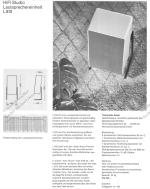
Slightly older than the L100 mini 2 way speakers that Dave Wilson used for the WAMM Series I & II (note the low crossover frequency):
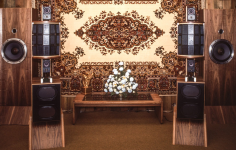
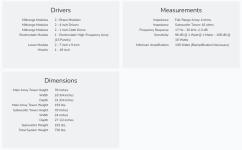

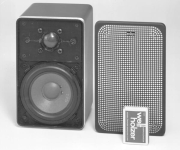
Fairly basic XO with decent components, especially for a 3 way speaker. Better than the awfully complex 'networks' in the L2/3(a):
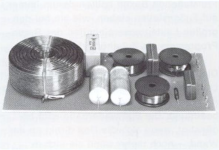
Last edited:
By the time I got into ADS, with the L500 in '76, they were on a stand alone and not using the Braun connection ( at least it was no longer advertised ).
My 810s are the first gen, from '78.
I also have a pair of in wall 300, in a box... I keep thinking I should build an enclosure for them.
Those old ADS still have some very good tone for today... they don't image like modern designs but sound very good. I had my 810 worked over... New caps in the crossover and one of the woofers needed a new coil/spyder after all of these years but otherwise they still CRANK.
I got the Marantz 2325 into them.... Led Zeppelin... George Benson... Frank Zappa.... a perfect combination.
Pass the bong... ;-)
I can't believe what the hucksters in eBay are asking for them nowadays. An absolute rip off.
My 810s are the first gen, from '78.
I also have a pair of in wall 300, in a box... I keep thinking I should build an enclosure for them.
Those old ADS still have some very good tone for today... they don't image like modern designs but sound very good. I had my 810 worked over... New caps in the crossover and one of the woofers needed a new coil/spyder after all of these years but otherwise they still CRANK.
I got the Marantz 2325 into them.... Led Zeppelin... George Benson... Frank Zappa.... a perfect combination.
Pass the bong... ;-)
I can't believe what the hucksters in eBay are asking for them nowadays. An absolute rip off.
Last edited:
Last edited:
In its day a lot of weenies didn't like the deep bass from the 810. I guess they thought that the East Coast Sound had to be "lean".
The 810 sort of was a Mid Western kind of sound in that it had the deep, ripe, rich bass of the West Coast Sound ( JBL L100 ) but the speed and tightness of the bass in East Coast Sound.
Gotta tell ya... given enough power, those suckers ROCK. I was never much in love with the JBL L100, I thought they were very slow (still are) but I liked the Snell. The ADSs of the late 70s were something else.
Oh, yeah, I did eventually got my Snells ( Audio Note AN K/LX ). You can not imagine how good the sound of that single ~8 inch woofer is in that small speaker. You gotta hear it. It's almost like a Supercalifragilisticexpialidocious L500... with much better midrange, of course.
Speaking of Mary Poppins
That a spoonful of sugar helps the medicine go down
The medicine go down, the medicine go down
Just a spoonful of sugar helps the medicine go down
In a most delightful way
I'm old enough to remember we watched that movie in its first run... ( The music is playing right now behind me ).
The 810 sort of was a Mid Western kind of sound in that it had the deep, ripe, rich bass of the West Coast Sound ( JBL L100 ) but the speed and tightness of the bass in East Coast Sound.
Gotta tell ya... given enough power, those suckers ROCK. I was never much in love with the JBL L100, I thought they were very slow (still are) but I liked the Snell. The ADSs of the late 70s were something else.
Oh, yeah, I did eventually got my Snells ( Audio Note AN K/LX ). You can not imagine how good the sound of that single ~8 inch woofer is in that small speaker. You gotta hear it. It's almost like a Supercalifragilisticexpialidocious L500... with much better midrange, of course.
Speaking of Mary Poppins
That a spoonful of sugar helps the medicine go down
The medicine go down, the medicine go down
Just a spoonful of sugar helps the medicine go down
In a most delightful way
I'm old enough to remember we watched that movie in its first run... ( The music is playing right now behind me ).
Last edited:
The equalizer had a bypass switch. I could hear the effect of the equalization.
I moved the microphone and speakers about to make sure I didn't have an issue with standing waves. So I could remove the effects of the room from the equalization.
I was familiar with the equipment and the room. So I understood the effects of the equalization on how the system sounded.
I ended up with the speakers where they started and no need for any equalization. Except some "loudness" when I listened late at night at low levels.
Thank you for elaborating on the details of your test. Given the care that you took, this equalizer set to neutral (no-adjustment) presumably sounded fairly indistinguishable from being set to bypass (or physically out of circuit). My bad experience: decades ago when the NAD monitor series 1300 preamp was a recommended Stereophile B, I had compared its parametric EQ set to no-adj vs set to bypass; obvious loss of transparency i.e. not recommendable.
Nowadays I use a so-called attenuation-based loudness compensation circuit (design had come from Japanese flagship non-portable boomboxes; posted by me somewhere on diyaudio). I had just done a comp last weekend on a new-to-me older vintage alnico British 8" -- directly relevant to this FR discussion (but OT this thread except questioning necessity/desirability of frequency extremes). With EQ passively attenuating all frequency except both ends, this OBU (tiny open-back boxes) sounded more like my other (I consider high fidelity) speakers: extremely detailed, transparent, and articulate. Whereas straight-through amp to driver, specific very-high frequency details were missing (such as a sharp lilting full-stop at the end of a sung-word); a bit darker/warmer top-end and leaner bottom-end. Though sounding less forward, the overall resolution, transparency, immediacy, articulation and dynamics were just a little bit better still (surpassing most of what I have). Live acoustic concert front-row seat vs more relaxed salon perspective, I think.
p.s. Next I need to control for the source output level difference necessitated by the attenuation-based EQ.
Last edited:
IEC baffle?Free field and in-room response of the 8" woofer that's also used in the L810.
Nothing to sneeze at, considering it's >50 years old.
View attachment 1443614
I don't think so. The Fs of the 8" woofers was 20 Hz and of the 12" woofer even 13 Hz.
All cabs were sealed designs.
Here's the brochure.
All cabs were sealed designs.
Here's the brochure.
Last edited:
In its day a lot of weenies didn't like the deep bass from the 810. I guess they thought that the East Coast Sound had to be "lean".
The 810 sort of was a Mid Western kind of sound in that it had the deep, ripe, rich bass of the West Coast Sound ( JBL L100 ) but the speed and tightness of the bass in East Coast Sound.
Gotta tell ya... given enough power, those suckers ROCK. I was never much in love with the JBL L100, I thought they were very slow (still are) but I liked the Snell. The ADSs of the late 70s were something else.
Oh, yeah, I did eventually got my Snells ( Audio Note AN K/LX ). You can not imagine how good the sound of that single ~8 inch woofer is in that small speaker. You gotta hear it. It's almost like a Supercalifragilisticexpialidocious L500... with much better midrange, of course.
All BRAUN drivers from the late 60s onwards were proprietary designs (previously they used Isophon drivers).
Quite advanced stuff. The middome was also excellent.
I know the AN-K well. It's also a sealed design with a customized vifa M21WG, now made by SCAN SPEAK.
Last edited:
I has quite active in HIFI starting around 1975. I think all Braun products where overrated in their sonic performence.
They speaker where build quite good, but the electronics had much more refinement and excellent data.
Anyway, soundwise they had something of measuring gear: Over pronounced objectivity. I think with all the best equipment of that time available, there was not one tester with the word "audiophile" written on it in the BRAUN developing lab. Something other, Japanese and US brands hat already implemented into the corporate identity.
BRAUN was made for wealthy, older listeners, playing classic recordings like Karajan directed stuff. People that bought once and keept gear for decades. When Braun finaly realized that you can't run a company on people buying once in a lifetime, they where already broke.
With rock or disco music they simply did not deliver the feeling modern productions could give. So the audience turned to other, less expensive brands.
Braun= nice gear for old people.
They speaker where build quite good, but the electronics had much more refinement and excellent data.
Anyway, soundwise they had something of measuring gear: Over pronounced objectivity. I think with all the best equipment of that time available, there was not one tester with the word "audiophile" written on it in the BRAUN developing lab. Something other, Japanese and US brands hat already implemented into the corporate identity.
BRAUN was made for wealthy, older listeners, playing classic recordings like Karajan directed stuff. People that bought once and keept gear for decades. When Braun finaly realized that you can't run a company on people buying once in a lifetime, they where already broke.
With rock or disco music they simply did not deliver the feeling modern productions could give. So the audience turned to other, less expensive brands.
Braun= nice gear for old people.
Last edited:
So, can someone help date or ID this vintage 8" Braun, back sticker "BR(tall A)UN 2621 604"? When I bought them I didn't think they sounded special, but they were part of a lot, with three British 8" vintage pairs. Quite nice as desktop LX midwoof over a classy short trash can, with Brit (to die for) on top as fullrange.
Attachments
Well, @Turbowatch2 and @tonyEE you both are free to prefer anything at any point. Isn't it much more productive to discover why it is you feel that way? If you don't know the science behind why, you are still lost.
2. This has nothing to with Anything. By creating a flat frequency response on axis, the content is free of Additional Color via FR. Which is fine because the content IS colored, already. Ironically, there isn't a big issue with neutrally colored mixes because we are talking about the same aspect of 2 different topics, thus "neutral" means 2 different things in each context. Neutrality of the Monitoring system is the flatness of response on the Z scale...Neutral to your ear is sloped at -3db per octave on the Z scale, and you do like it... Even though most mixes defer from it, the ones that do not, fit in with the rest, probably sounding the most balanced. Most of the things that anyone could claim "sounds good to the ear" can be and is usually baked into the source material if we are describing the perfect recording or something to that extent. The best an engineer can do is try and predict the character of his audiences system, hoping to account for it, so that you hear what he wanted you to hear. Mostly Impossible. As said many times, a loudspeaker system isn't meant to sound good, only to express the material its given, as accurately as possible. Like a wine designer spending time on his recipe, he knows his customers will do what they want to his art, adding ingredients, but hes most happy with the customers who intend to taste his wine as he meant it to be heard, I mean tasted... and he is likely wanting for the opinion of those people more so than those who are augmenting his creations into something arbitrary. That is a purest type attitude, the reality lends to designing [masters] overall tone towards neutral [to the ear] with a bias that matches other already successful content that the engineer admires within the genre that matches the work. That in itself is very interesting if you ask me, I think it shows that the best we can do is follow the money trail, suggesting that whatever has been already successful, has a better chance than trying to reinvent the wheel. People hate change, ask any band that has tried to "do something a little different" lol. Its like gambling and most people lose ☺️ in the case of tone, going too far outside of the norm of what's already successful, is a gamble.
Most people are Not eclectic... repeat that a few times for effect. Thus they are listening to music of the same or similar genre, which tends to be tone colored, a certain way, and then the voices of their desired loudspeaker systems are complimenting such, as I said, music within certain genres have a range of successful tone characters that may or may not reflect/compliment some or any of the tone characteristics of another genre... the same is true about loudspeaker dispersion. Certain people who like certain genres can be seen trending with Open Baffle designs. Can you guess who? EDM lovers or Classical music? Tough one....
"Recorded music, to begin with, exists in an extraordinarily artificial, carefully 'graded' sonic space that has little relation to the frequency balance of real instruments or the everyday sounds you hear. When redeploying this artificial sonic space within a real-world environment, decisions regarding frequency balance and volume levels are not about what constitutes "correct" playback; rather, they are entirely matters of individual perception and cultural context."
3. Doesn't make sense. Recorded music exist in various environments including scoring stages, grand halls, bed rooms, basements, fields, forests, etc. The "grading" of any sonic space is as unique. Nothing has a relation to the frequency response of "real instruments" (outside of the connection between direct and indirect sound) which only sparks another debate about which instruments are real vs fake. When redeploying recorded material in the real world, decisions regarding FR and Gain are definitely apart of what we call Accuracy. Its been said many times and maybe not enough times, The loudspeaker, from a technical stand point, and from an Accuracy stand point [neglecting anything of preference] is a matter of removing all of the distortions that are practically removed.
1. Are you sure.... How far back until we started using Monitoring designed for neutral responses? Genelec seems be the start of it but I'm speculating.Based on my experience, I believe that the probability of perceiving flat speakers as the "least flawed speakers" is quite high, but I also think that we should seriously reconsider whether the idea that "flat response is the correct response to aim for" is truly grounded in science.
I've mentioned this before, but:
1 Historically, commercially released music has not necessarily been intended for playback on flat-response speakers, nor has it always been mastered in such environments. This is one of the major reasons why, when played back on flatter horn speakers without a BBC dip, many people find instruments like violins to be excessively bright.
2 Human hearing itself is not flat, and the frequency response of the ear is irregular beyond the range that the brain can compensate for. If you sweep a monaural sine wave using headphones, you'll notice that certain frequency ranges shift between the left and right ears. This isn’t a matter of preference but rather a physical, individual variation. Since our ears aren’t naturally flat to begin with, there’s absolutely no need to force yourself to listen to flat-response speakers, especially since most of us DIYers are not doing this as a business.
3 Recorded music, to begin with, exists in an extraordinarily artificial, carefully 'graded' sonic space that has little relation to the frequency balance of real instruments or the everyday sounds you hear. When redeploying this artificial sonic space within a real-world environment, decisions regarding frequency balance and volume levels are not about what constitutes "correct" playback; rather, they are entirely matters of individual perception and cultural context.
2. This has nothing to with Anything. By creating a flat frequency response on axis, the content is free of Additional Color via FR. Which is fine because the content IS colored, already. Ironically, there isn't a big issue with neutrally colored mixes because we are talking about the same aspect of 2 different topics, thus "neutral" means 2 different things in each context. Neutrality of the Monitoring system is the flatness of response on the Z scale...Neutral to your ear is sloped at -3db per octave on the Z scale, and you do like it... Even though most mixes defer from it, the ones that do not, fit in with the rest, probably sounding the most balanced. Most of the things that anyone could claim "sounds good to the ear" can be and is usually baked into the source material if we are describing the perfect recording or something to that extent. The best an engineer can do is try and predict the character of his audiences system, hoping to account for it, so that you hear what he wanted you to hear. Mostly Impossible. As said many times, a loudspeaker system isn't meant to sound good, only to express the material its given, as accurately as possible. Like a wine designer spending time on his recipe, he knows his customers will do what they want to his art, adding ingredients, but hes most happy with the customers who intend to taste his wine as he meant it to be heard, I mean tasted... and he is likely wanting for the opinion of those people more so than those who are augmenting his creations into something arbitrary. That is a purest type attitude, the reality lends to designing [masters] overall tone towards neutral [to the ear] with a bias that matches other already successful content that the engineer admires within the genre that matches the work. That in itself is very interesting if you ask me, I think it shows that the best we can do is follow the money trail, suggesting that whatever has been already successful, has a better chance than trying to reinvent the wheel. People hate change, ask any band that has tried to "do something a little different" lol. Its like gambling and most people lose ☺️ in the case of tone, going too far outside of the norm of what's already successful, is a gamble.
Most people are Not eclectic... repeat that a few times for effect. Thus they are listening to music of the same or similar genre, which tends to be tone colored, a certain way, and then the voices of their desired loudspeaker systems are complimenting such, as I said, music within certain genres have a range of successful tone characters that may or may not reflect/compliment some or any of the tone characteristics of another genre... the same is true about loudspeaker dispersion. Certain people who like certain genres can be seen trending with Open Baffle designs. Can you guess who? EDM lovers or Classical music? Tough one....
"Recorded music, to begin with, exists in an extraordinarily artificial, carefully 'graded' sonic space that has little relation to the frequency balance of real instruments or the everyday sounds you hear. When redeploying this artificial sonic space within a real-world environment, decisions regarding frequency balance and volume levels are not about what constitutes "correct" playback; rather, they are entirely matters of individual perception and cultural context."
3. Doesn't make sense. Recorded music exist in various environments including scoring stages, grand halls, bed rooms, basements, fields, forests, etc. The "grading" of any sonic space is as unique. Nothing has a relation to the frequency response of "real instruments" (outside of the connection between direct and indirect sound) which only sparks another debate about which instruments are real vs fake. When redeploying recorded material in the real world, decisions regarding FR and Gain are definitely apart of what we call Accuracy. Its been said many times and maybe not enough times, The loudspeaker, from a technical stand point, and from an Accuracy stand point [neglecting anything of preference] is a matter of removing all of the distortions that are practically removed.
Last edited:
This makes no sense.I moved the microphone and speakers about to make sure I didn't have an issue with standing waves. So I could remove the effects of the room from the equalization.
"Is that "scientific" enough for you?" Hell no... "Should I scan my diploma? It says "Physics" right on it." Omg I just noticed what you actually said.... Are you purposely trying to be disrespectful? Are you suggesting that a person who might of spent most their professional life dedicated to the knowledge of Acoustics is a sort of joke? Tell me thats not what you are going for, we literally have that person, in conversation, one that has been so kind to even grace us with there attention... I am personally offended and I'm not even that person but I don't mind being the one to deliver reality to you. It is beyond me why people disrespect professionalism and science when it comes to acoustics like its sooo simple and one can just "figure it out" as they go. its more, "Im just gonna make some sht up" because I am not disciplined enough to sit down and read for longer than 60 seconds on yet another topic.I was familiar with the equipment and the room. So I understood the effects of the equalization on how the system sounded.
I ended up with the speakers where they started and no need for any equalization. Except some "loudness" when I listened late at night at low levels.
Is that "scientific" enough for you? Should I scan my diploma? It says "Physics" right on it.
Last edited:
Hmm... do you understand that standing waves in a room are specific to the room? The nulls and peaks are static -for a given configuration. (1) Moving the sources of sound and the measurement instruments about will locate nulls and peaks.
With a calibrated microphone, a source of white noise and an audio frequency spectrum analyzer you can find the nulls and peaks. (2)
THAT is science... OK, more like engineering, but there is acoustic science behind it.
https://sengpielaudio.com/calculator-roommodes.htm
https://www.hunecke.de/en/calculators/room-eigenmodes.html
Notice the comment how you can not equalize standing nodes...
(1) I wasn't gonna move the couch.
(2) Heck in the lower bass, you can actually detect nodes by listening to music that has enough bass. Walk the room.
With a calibrated microphone, a source of white noise and an audio frequency spectrum analyzer you can find the nulls and peaks. (2)
THAT is science... OK, more like engineering, but there is acoustic science behind it.
https://sengpielaudio.com/calculator-roommodes.htm
https://www.hunecke.de/en/calculators/room-eigenmodes.html
Notice the comment how you can not equalize standing nodes...
(1) I wasn't gonna move the couch.
(2) Heck in the lower bass, you can actually detect nodes by listening to music that has enough bass. Walk the room.
Last edited:
You are saying words but it isn't in the proper or technically correct way... Of course you can equalize nodes. Just use an equalizer. You might not like the results is all.... Placing the speaker in a place where the resulting FR at the listening position isn't suffering from Nodes isn't the same as removing the effects of the room. Sorry.Notice the comment how you can not equalize standing nodes..
Last edited:
- Home
- Loudspeakers
- Multi-Way
- Is it possible to cover the whole spectrum, high SPL, low distortion with a 2-way?
